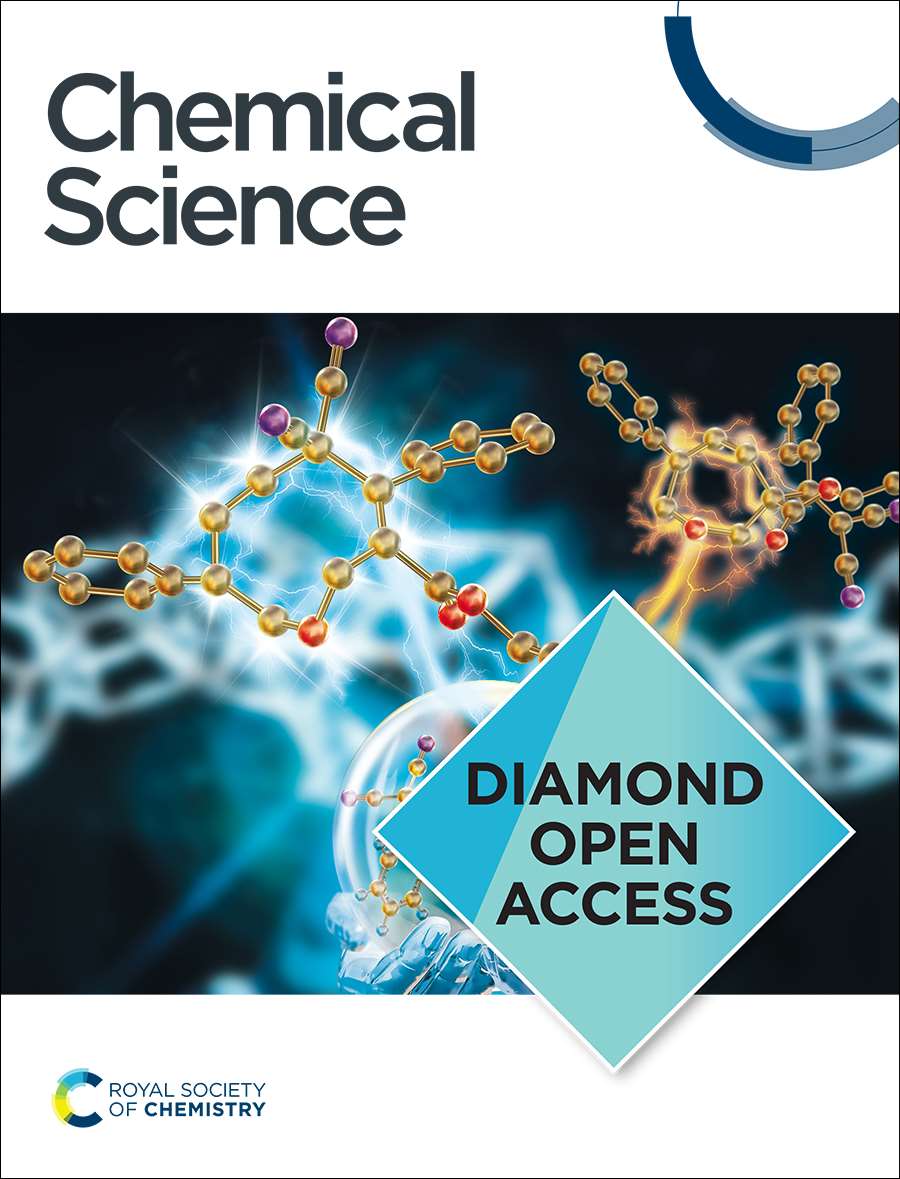具有简并单重态-三重态基态和强光致发光的光稳定三苯基甲基双自由基
IF 7.4
1区 化学
Q1 CHEMISTRY, MULTIDISCIPLINARY
引用次数: 0
摘要
我们提出了一类新的基于吲哚咔唑对称桥接的三(三氯苯基)甲基(TTM)核心的发光二自由基。这些双自由基具有纯双自由基特性y 0和前所未有的光致发光量子产率φ高达18 %,解决了发展稳定,发光有机双自由基的关键挑战。发光的二自由基对合成化学家来说是一个巨大的挑战;应用于量子传感中的分子色心和光电子学中的发射体。不像传统的方法需要转换闭壳前体,我们直接偶联溴化的TTM自由基通过Buchwald-Hartwig耦合。通过电子顺磁共振EPR,紫外-可见吸收和光致发光光谱全面表征了所得分子的磁性和光学性质。这项工作将离散TTM自由基的强大光物理学与供体桥接多自旋系统的电子多功能性结合起来,为功能性开壳发射器提供了一种有前途的设计策略。本文章由计算机程序翻译,如有差异,请以英文原文为准。
Photostable Triphenylmethyl-Based Diradicals with a Degenerate Singlet-Triplet Ground State and Strong Photoluminescence
We present a new class of luminescent diradicals based on tris(trichlorophenyl)methyl (TTM) cores symmetrically bridged by indolocarbazole donors. These diradicals exhibit pure diradical character y₀ and unprecedented photoluminescence quantum yields ϕ of up to 18 %, addressing key challenges in the development of stable, emissive organic diradicals. Light emitting diradicals represent a formidable challenge for synthetic chemists; for applications as molecular color centers in quantum sensing and as emitters in optoelectronics. Unlike conventional approaches that require the conversion of closed-shell precursors, we directly couple brominated TTM radicals via Buchwald–Hartwig coupling. The magnetic and optical properties of the resulting molecules are comprehensively characterized by electron paramagnetic resonance EPR, UV–vis absorption, and photoluminescence spectroscopy. This work unites the robust photophysics of discrete TTM radicals with the electronic versatility of donor-bridged multi-spin systems, offering a promising design strategy for functional open-shell emitters.
求助全文
通过发布文献求助,成功后即可免费获取论文全文。
去求助
来源期刊

Chemical Science
CHEMISTRY, MULTIDISCIPLINARY-
CiteScore
14.40
自引率
4.80%
发文量
1352
审稿时长
2.1 months
期刊介绍:
Chemical Science is a journal that encompasses various disciplines within the chemical sciences. Its scope includes publishing ground-breaking research with significant implications for its respective field, as well as appealing to a wider audience in related areas. To be considered for publication, articles must showcase innovative and original advances in their field of study and be presented in a manner that is understandable to scientists from diverse backgrounds. However, the journal generally does not publish highly specialized research.
 求助内容:
求助内容: 应助结果提醒方式:
应助结果提醒方式:


